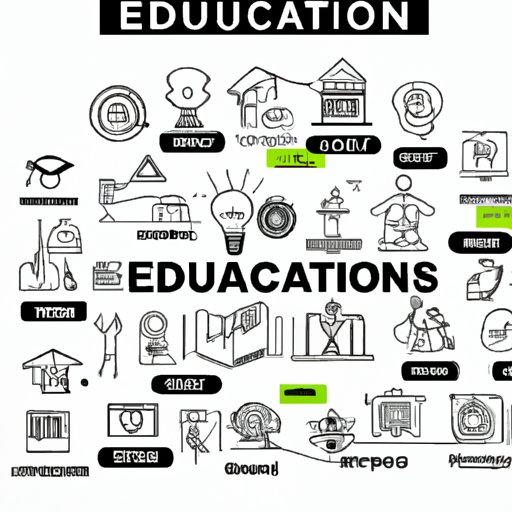
I. Introduction
Tertiary education, also known as higher education, refers to education pursued after completion of secondary education. This level of education encompasses undergraduate and postgraduate education, vocational training, and professional education. Pursuing tertiary education is important for personal and professional growth, and this article will explore its different forms, benefits, and evolution.
II. Why Pursuing Tertiary Education Should Be Your Next Move
There are many advantages of pursuing tertiary education. Firstly, it opens up opportunities for higher income and career advancement. Tertiary education graduates are more likely to secure higher-paying jobs and have greater job security. Secondly, it develops soft skills like communication, teamwork, and critical thinking that are highly valued by employers. Thirdly, tertiary education offers life-changing benefits like personal growth and societal contribution.
III. Breaking Down Tertiary Education: Understanding Its Different Forms and Benefits
There are three main types of tertiary education: undergraduate, postgraduate, and vocational training. Undergraduate education leads to a Bachelor’s degree, whereas postgraduate education offers Master’s degrees, PhD’s, and professional degrees. Vocational training offers technical skills for specific occupations. Each type of education has its unique benefits, and learners should choose based on their career aspirations and interests. For example, undergraduate education is broader and prepares students for a wide range of jobs, while vocational education hones specific skills required in particular occupations.
IV. How Tertiary Education Has Evolved Over the Years: A Brief History
Tertiary education has been part of human civilization since ancient times. However, its formalization began in medieval Europe with the establishment of universities. Revolutionary changes have occurred in tertiary education, from the introduction of e-learning, digital education, and competency-based training to the inclusion of women and marginalized groups and offering distance education. Today’s universities and colleges are diverse, inclusive and facilitate social mobility.
V. Navigating Tertiary Education: Tips and Tricks From Those Who’ve Been There
Prospective students who want to pursue tertiary education should follow some expert tips to maximize their success. Firstly, they should research and evaluate different institutions and programs to ensure they are pursuing the right career path. Secondly, they should manage their finances by exploring financial aid, scholarships, and other funding options. Finally, they should organize their time effectively, attend classes regularly, and leverage campus resources such as professors, peers, and academic support services.
VI. Tertiary Education Vs. Vocational Education: Which Is Right For You?
Vocational education offers technical skills for specific occupations, while tertiary education provides broad academic knowledge and professional skills. The advantages and disadvantages of each pathway depend on the individual, their career aspirations, and their current circumstances. For example, vocational education may be suitable for those who want to acquire specific job skills in a short time, while tertiary education is suitable for those who want to develop a holistic understanding of their field of study. Learners should choose the education pathway that aligns with their goals, interests, and financial viability.
VII. Conclusion
This article has highlighted the importance of tertiary education for personal and professional growth and explored its different forms, benefits, and evolution. Pursuing tertiary education opens doors of opportunity for higher income, career advancement, and personal growth. However, learners need to navigate the complex higher education landscape by researching, evaluating, and effectively managing their finances and time to maximize their success. We encourage readers to take the next step in their education journey, and we wish them all the best in their future careers.




